The Amalfi Coast & Villages - Example
7 Nights
About Your Holiday
Campania and the Amalfi Coast
…‘it is a dream place that isn’t quite real when you are there and becomes beckoningly real after you have gone’.
John Steinbeck from his short story ‘Positano’ 1953
South of Naples and Vesuvius, the rugged promontory of the Amalfi Coast – a UNESCO World Heritage Site – fuses an astonishing, mountainous landscape with picturesque villages whose construction, clinging to steep cliffs and hillsides, appears to defy logic. It is little wonder with such breathtaking views that travellers, including artists, writers and musicians have been drawn to this beautiful place since Victorian times. Our route along the Amalfi Coast is a thrilling discovery of one of Europe’s most beautiful coastal regions, with dramatic trails into the Lattari Mountains that form the promontory’s spine. There can be no better way to explore here than on foot, following mule paths and stone stairways that have linked settlements for centuries; given the steep terrain, however, there are lots of steps, so do expect some exertion. Villages by the sea are lively with typically southern brio; inland, life moves at a less hectic pace. Our routes are short enough to allow you plenty of time to relax, as well as to enjoy walks amid lemons, olives and vineyards with the murmur of waves below. The routes are also flexible in places, meaning you can lengthen or shorten them to suit your own requirements.
You begin with two nights at Corpo di Cava. On your day here, take the train to fascinating Pompeii (pay locally), follow our circuit to a secluded chapel or relax by a pool. The following day starts with a transfer to bustling Maiori, from where hundreds of ancient stone steps lead up the slopes, between fragrant lemon groves, linking with a woodland trail to splendid Ravello. This is perhaps the most exclusive of all the Amalfitan villages, boasting the best views of the entire coast, especially from the gardens of the Palazzo Cimbrone, which you can visit on your day here. For more walking, we suggest a route that leads down to an ancient watchtower on a wooded promontory, returning to Ravello via a couple of small villages surrounded by lemon trees and vines.
From Ravello, after walking through the lush Valle delle Ferriere nature reserve, you can ascend to the Agerola Plain (to be collected by your host), or descend along a stepped pathway to explore historic Amalfi before catching the bus to the authentic hamlet of Bomerano, which offers a glimpse of the peninsula’s quieter side.
The next day is a real highlight, along the spectacular ‘path of the gods’ high above the sea, with views towards Capri in fine weather, before a steady descent down hundreds of stone steps to Positano. You have a day here to enjoy a rewarding walk into the mountains, or to simply appreciate Positano’s extraordinary location.
Amalfi’s maritime legacies
According to romantic legend the name Amalfi belonged to a nymph, beloved of Hercules, who was buried here at his request. Amalfi’s links with myth and legend do not stop there; in the main square of the town of Amalfi itself can be found a monument dedicated to Flavio Gioia c1300, heralded inventor of the nautical compass, who was recently proven never to have existed, despite a crater on the moon being named after him!
What is beyond dispute, however, is the Amalfi Coast’s claim to nautical fame - the nautical compass was invented by Amalfi’s seafaring people who were instrumental in spreading the use of this instrument throughout the Mediterranean. At its peak Amalfi was a small autonomous state lying between Cetara and Positano and governed by a duke. It had its own currency, the ‘tarí’, and was prosperous and coveted from afar. Amalfi asserted a huge influence on all things maritime, with testament to this being borne by a paper copy in the town’s museum of the ‘Tavola Amalfitana’; the maritime law, which reputedly dates back to the C17th. Also the enduring Amalfitan symbol, an eight pointed white cross on a blue background remains on the jack of the Italian navy to this day.
Emergency Contacts
Accommodation Contacts
Taxis

Travel Info
Practicalities
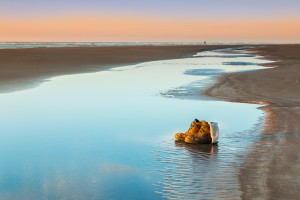
About Your Holiday

Walk Safely
Walking Grades

How to use our walking notes

GPS Navigation
The Amalfi Coast – A short history

Food & Drink

Flora & Fauna
Local Landscape & Architecture


